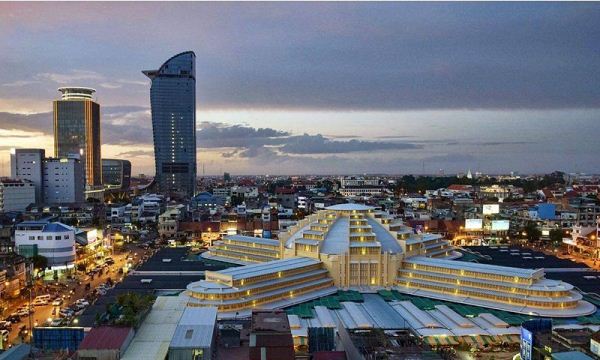The economic outlook for Asia and the Pacific remains strong, and the region continues to be the most dynamic of the global economy. But there are risks and challenges ahead, including from a tightening of global financial conditions, a shift toward inward-looking policies, and an increase in geopolitical tensions, according to the International Monetary Fund’s (IMF) latest regional report.
The Regional Economic Outlook: Asia and Pacific (REO) forecasts growth for Asia at 5.6% this year and next, the outlook supported by strong global demand, as well as still accommodative policies and financial conditions.
China’s growth is expected to moderate to 6.6% in 2018 as financial, housing, and fiscal tightening measures take effect.
Growth in Japan has been above potential for eight consecutive quarters and is expected to remain strong at 1.2% this year.
In India, growth is forecast to rebound to 7.4% in FY 2018/19 as the economy recovers from disruptions related to the currency exchange initiative and the rollout of the new Goods and Services Tax.
Growth in the Association of Southeast Asian Nations (ASEAN) is projected to stay at 5.3% both this year and next, reflecting strong investment and consumption across several countries.
Among the member states of the ASEAN subregion, Indonesia’s growth is projected to increase to 5.3% in 2018 and 5.5% in 2019, led by a pickup in investment and consumption driven by infrastructure activity and stronger commodity prices.
Thailand’s growth is forecast at 3.9% in 2018 and 3.8% in 2019, while for Singapore, growth is projected at 2.9% in 2018, easing to 2.7% in 2019.
Malaysia’s GDP growth is projected at 5.3% in 2018, slightly above potential, and 5.0% the following year.
For the Philippines, meanwhile, growth is projected at 6.7% in 2018 and 6.8% in 2019, led by robust infrastructure investment and private consumption.
Vietnam’s growth is expected to continue at 6.6% this year and 6.5% in 2019. For Myanmar, growth is expected to pick up toward the estimated potential of 7% to 7.5% over the medium term, reflecting continued strong foreign direct investment inflows and an improvement in public investment spending and efficiency.
Cambodia’s medium-term growth is projected to slow to about 6% on account of a moderation in the credit and real estate cycles, coupled with ongoing challenges in improving economic diversification and competitiveness.
Growth in Lao P.D.R. is expected to continue at about 7% in the near and medium term, while in Brunei Darussalam, growth is expected to pick up to 1% in 2018 reflecting higher oil output.
In most of the rest of the Asia-Pacific region, including small states and Pacific island countries, growth is also expected to be strong.
According to the report, there are both upsides and downsides to the forecast. Although they largely balance out in the near term—over the medium term, the downside risks dominate.
On the upside, growth momentum could be more durable than expected amid strong consumer and business confidence and still loose financial conditions. The rollout of the fiscal stimulus in the U.S. as well as a stronger recovery in the euro area could lift global growth, with positive spillovers to Asia.
But over the medium term, Asia is vulnerable to a tightening of global financial conditions and higher U.S. interest rates, which could trigger capital outflows; a global shift toward inward-looking policies, which would suppress Asia’s exports and reduce foreign direct investment in the region; escalating geopolitical risks; and natural disasters and cyberattacks.
And over the longer term, Asia faces a number of important challenges from population aging, slowing productivity growth, and the digital revolution, which brings huge opportunities along with risks, said IMF.
Photo: Lor Teng Huy









